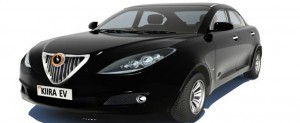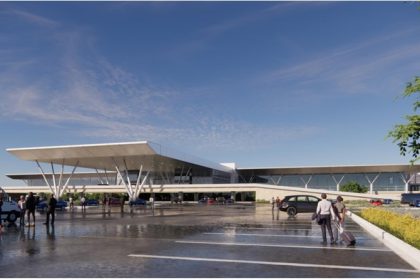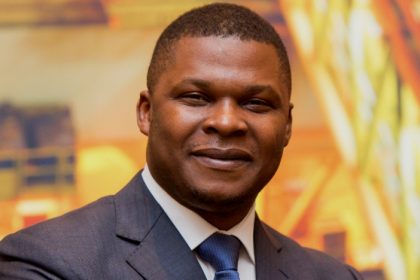Beyond the bolts and nuts of the Kiira EV
 KAMPALA DECEMBER 10-The unveiling of the business case for a home grown automobile manufacturing industry in Uganda this week, attracted a predictable dose of skepticism. In a surprisingly low-key ceremony at the Prime Ministers’ Office on December 7, Makerere University and Uganda Development Corporation –for now the stockholders in Kiira Motor Corporation- launched the business case for motor vehicle manufacturing in Uganda. Calculations by seasoned egg-heads returned a positive verdict for the venture. But with the announcement unfortunately coming during election season; it was inevitable that some would see this momentous development as no more than just another publicity stunt by the ruling party and a funnel through which increasingly scarce public resources will be drained on misplaced priorities. In a country where public procurement is notoriously flawed, the state has suffered a deep erosion of trust and; failure rather than success, define government driven initiatives, the doubting Thomas’s can be forgiven. Yet despite the fumbles here and there; there is a definite upside to the Kiira EV. Many might be pleasantly surprised to learn that the first prototype of the Kiira EV sedan was, save for the power train (engine and transmission) hand built in Uganda . It is obviously heavy but the precision of its lines attests to the latent potential lying idle for lack of an outlet. This single vehicle cost 400 million Uganda shillings to build – a whopping sum by our standards but peanuts given the processes and number of units involved. The unit cost and other technical issues are self-limiting though – as production climbs the unit cost will come down – while tapping into the global supply chain will ensure the product conforms to the latest manufacturing standards in its class. Manufacturers of anything from aircraft to the latest edition of the smart phone are in reality systems integrators’. They conceptualise the product – what it will look like, what it will do and how it will do it and then leverage the global supply chain to fabricate the parts to particular specifications and deliver them for final assembly. For example my Samsung Serie3 laptop is running on a processor made by Hitachi, which may be using Intel Chips fabricated in China! It is what Airbus, Boeing and even Apple do to deliver world class products. Another example is Korea’s Hyundai that for the first few decades was only making the chassis and bodies for its buses and trucks. It relied on Japan’s Mitsubishi for the power train until they achieved the capacity and economies to make first their own engines and later the transmission. That is the path Kiira Motors will employ but it does not make the end product any less Ugandan. Instead, that approach helps deliver a product that is globally competitive at a relatively low cost of entry. The Kiira EV and the other automotive products that will come off the assembly line in Jinja will therefore, be Ugandan because the majority of the parts that will go into each of those vehicles will first have been conceived and designed in Uganda. Even the hybrid power plant which will probably be an off-the shelf solution, would need to fit within the designers overall concept of the vehicle. To focus on whether the Kiira EV will or will not succeed is therefore, to bark up the wrong tree. Beyond beating the metal into the shape of these beasts, there are tangible benefits for the broader economy. As Kiira Motors Corporation Chief Executive Isaac Musasizi observed, manufacturing motor vehicles in Uganda will create a platform for high-tech employment in the country. Whichever way the venture goes, we are likely to see the full release of the creative potential of our young innovators, manifested in the many software products that are presently limited by the absence of commercial outlets. Though he has been the object of some pessimistic criticism, Musasizi comes across as a calm and collected individual, who if he does not know where he is going, atleast knows where he wants to go. He has crafted a 25 year plan for domesticating Kiira EV engineering and production, starting with what can viably be done in Uganda. He hopes that by 2035, ninety percent of the vehicle’s manufacturing will be done in Uganda and if the economics are right – volume of production runs to buy down the cost- even the engines could be made in Uganda. That is a very viable proposition given the pace of African economic integration. If Ugandans will be riding ego trains because of their petrodollars, there will be many people in Comesa willing to settle for basic conveyance at a reasonable cost of acquisition. It can be anticipated that as the tooling for the fabrication of Kiira EV’s different components gradually comes home, it will stimulate the development of an engineering value chain that will propel Uganda into the machine age with a reasonably integrated vehicle manufacturing capability. That is barely anything to bemoan.
KAMPALA DECEMBER 10-The unveiling of the business case for a home grown automobile manufacturing industry in Uganda this week, attracted a predictable dose of skepticism. In a surprisingly low-key ceremony at the Prime Ministers’ Office on December 7, Makerere University and Uganda Development Corporation –for now the stockholders in Kiira Motor Corporation- launched the business case for motor vehicle manufacturing in Uganda. Calculations by seasoned egg-heads returned a positive verdict for the venture. But with the announcement unfortunately coming during election season; it was inevitable that some would see this momentous development as no more than just another publicity stunt by the ruling party and a funnel through which increasingly scarce public resources will be drained on misplaced priorities. In a country where public procurement is notoriously flawed, the state has suffered a deep erosion of trust and; failure rather than success, define government driven initiatives, the doubting Thomas’s can be forgiven. Yet despite the fumbles here and there; there is a definite upside to the Kiira EV. Many might be pleasantly surprised to learn that the first prototype of the Kiira EV sedan was, save for the power train (engine and transmission) hand built in Uganda . It is obviously heavy but the precision of its lines attests to the latent potential lying idle for lack of an outlet. This single vehicle cost 400 million Uganda shillings to build – a whopping sum by our standards but peanuts given the processes and number of units involved. The unit cost and other technical issues are self-limiting though – as production climbs the unit cost will come down – while tapping into the global supply chain will ensure the product conforms to the latest manufacturing standards in its class. Manufacturers of anything from aircraft to the latest edition of the smart phone are in reality systems integrators’. They conceptualise the product – what it will look like, what it will do and how it will do it and then leverage the global supply chain to fabricate the parts to particular specifications and deliver them for final assembly. For example my Samsung Serie3 laptop is running on a processor made by Hitachi, which may be using Intel Chips fabricated in China! It is what Airbus, Boeing and even Apple do to deliver world class products. Another example is Korea’s Hyundai that for the first few decades was only making the chassis and bodies for its buses and trucks. It relied on Japan’s Mitsubishi for the power train until they achieved the capacity and economies to make first their own engines and later the transmission. That is the path Kiira Motors will employ but it does not make the end product any less Ugandan. Instead, that approach helps deliver a product that is globally competitive at a relatively low cost of entry. The Kiira EV and the other automotive products that will come off the assembly line in Jinja will therefore, be Ugandan because the majority of the parts that will go into each of those vehicles will first have been conceived and designed in Uganda. Even the hybrid power plant which will probably be an off-the shelf solution, would need to fit within the designers overall concept of the vehicle. To focus on whether the Kiira EV will or will not succeed is therefore, to bark up the wrong tree. Beyond beating the metal into the shape of these beasts, there are tangible benefits for the broader economy. As Kiira Motors Corporation Chief Executive Isaac Musasizi observed, manufacturing motor vehicles in Uganda will create a platform for high-tech employment in the country. Whichever way the venture goes, we are likely to see the full release of the creative potential of our young innovators, manifested in the many software products that are presently limited by the absence of commercial outlets. Though he has been the object of some pessimistic criticism, Musasizi comes across as a calm and collected individual, who if he does not know where he is going, atleast knows where he wants to go. He has crafted a 25 year plan for domesticating Kiira EV engineering and production, starting with what can viably be done in Uganda. He hopes that by 2035, ninety percent of the vehicle’s manufacturing will be done in Uganda and if the economics are right – volume of production runs to buy down the cost- even the engines could be made in Uganda. That is a very viable proposition given the pace of African economic integration. If Ugandans will be riding ego trains because of their petrodollars, there will be many people in Comesa willing to settle for basic conveyance at a reasonable cost of acquisition. It can be anticipated that as the tooling for the fabrication of Kiira EV’s different components gradually comes home, it will stimulate the development of an engineering value chain that will propel Uganda into the machine age with a reasonably integrated vehicle manufacturing capability. That is barely anything to bemoan.

 Why we beg to differ with President Museveni on permanent terms pronouncement
Why we beg to differ with President Museveni on permanent terms pronouncement
 Uganda’s Aviation Infrastructure: Time for ambitious upgrades and structural reform
Uganda’s Aviation Infrastructure: Time for ambitious upgrades and structural reform
 Why and how economics must change
Why and how economics must change
 Illicit alcohol, the unbridled silent killer in Uganda
Illicit alcohol, the unbridled silent killer in Uganda
 Sobi’s gang is fragmenting, here is why that is bad for you
Sobi’s gang is fragmenting, here is why that is bad for you
 Africans must resist being bulldozed in energy transition timetable debate
Africans must resist being bulldozed in energy transition timetable debate
